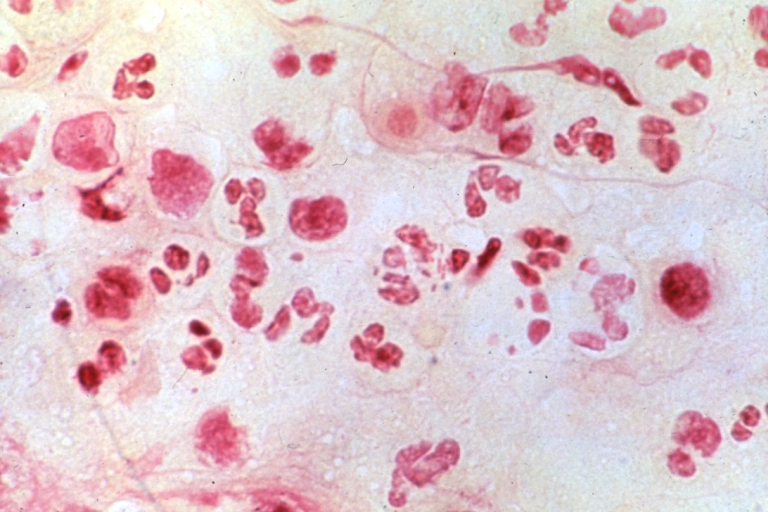Bubo
 From Wikidoc - Reading time: 1 min
From Wikidoc - Reading time: 1 min
| Bubo | |
 | |
|---|---|
| Chancroid, Smear of Bubo. Image courtesy of Professor Peter Anderson DVM PhD and published with permission © PEIR, University of Alabama at Birmingham, Department of Pathology |
Template:Search infobox Editor-In-Chief: C. Michael Gibson, M.S., M.D. [1]
Overview[edit | edit source]
A bubo (Greek boubôn, "groin") (plural form= buboes) is a swelling of the lymph nodes, found in an infection such as bubonic plague, gonorrhea, tuberculosis or syphilis.
According to historical records they were also characteristic of the pandemic responsible for the Black Death and perhaps other ancient pandemics. It usually appears under the armpit, in the groin or on the neck. Many doctors believed that bursting them was the answer, although in the view of modern medicine this treatment is useless or in fact harmful. There are reports of people using hen feathers in order to burst lymph nodes. When lymph nodes are burst, the puncture site can leave a patient at higher risk for dangerous infection.
Buboes rarely require any form of local care, but instead recede with systemic antibiotic therapy. In fact, for plague patients, incision and drainage poses a risk to others in contact with the patient due to aerosolization of the bubo contents.
Needle aspiration can be done for diagnostic purposes and may also provide symptomatic relief.
 KSF
KSF